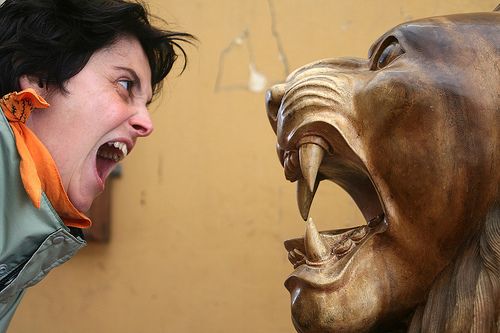It used to be that people took responsibility for their behavior and that of their animals.
Today it seems like the trend is to blame someone else and to not take responsibility.
Two stories caught my eye today…
The first was a commentary from the United Kingdom where a politician suggested that a test be implemented for those who wish to keep specific breeds labeled as dangerous dogs.
The Dangerous Dogs Act (1991) in the UK is legislation that bans the breeding, sale or exchange of specific breeds/cross breeds of particular dogs.
In the United States this legislation is no less controversial than in the UK and the mantra here is “Punish the deed not the breed.”
The statements of interest were:
- “We do not let a criminal or unsuitable person have lawful possession of a firearm or a weapon.”
- “Given the known temperament of certain breeds of dog, could we not insist on a fit and proper person test as a precondition of owning a dangerous dog?”
- “After all, criminals to have a proclivity for precisely these breeds.”
Yikes!
On the one hand, I would love to make everyone that gets an animal go through a qualification assessment. But after working in the shelter industry for a bit, I don’t think that does anyone any good.
Although legal minds would argue this, I think that owning an animal is a privilege and comes with particular responsibilities and obligations.
But some how, there are people that think they are the exception to the rule. And many think they are qualified to be pet owners when they really have no clue.
I’ve been pondering this topic because of the beastly behavior I’ve been seeing around these parts lately.
It brought to mind that it is not the animals that are to blame, it is the owners of the animals.
You see, people are responsible for teaching animals good petiquette–but in many cases, they are failing to teach good behavior.
Some even make excuses for the bad behavior such as, “Ohhhh, he is only a puppy.”
This is one of the reasons I think a pet parenting school is essential.
I see examples of just how unconcerned (or uninformed) people are on a daily basis around these parts.
In fact, my current community service project is keeping one of the parks a poop-free zone.
Just yesterday I scooped up twenty (yep, 20) piles of poop in the public area…and none of those were from the dogs that were with me.
Since I usually go to the park on a daily basis, I find this disgusting and distressing because it shows a lack of concern for others and the failure to take responsibility.
Some of the poop is from dogs that people let roam (against the local ordinances BTW), but other piles are from dogs whose owners just fail to make an effort to clear it.
I actually caught a visitor meandering onto my property to let their dog eliminate and walking away without cleaning it up.
When confronted he said he thought it was forest land.
Uh, you still need to clean it up either way!
Now cleaning up after other people’s animals is not a pleasant task, but it is something that I feel is important for others who use the park.
Keeping it tidy has the benefit of reducing health hazards and keeping the shoes of others cleaner than they might be if I did not.
Some of the roaming dogs have been aggressive to those who live in the area.
Personally, I have not had a problem with any of the local dogs and know most of the meandering mutts.
Most mind me pretty well–while one or two are a bit nervous when they see me because I am always telling them to, “git home!”
I live in a rural area and “git” is more effective than “get.”
Go figure.
But two neighbors reported that they were bit by the same dog.
I don’t have a problem with that animal but on the trail with some friends, that same dog and his fellow mutt showed aggression.
This hits on the “it takes a village” concept of people working together to teach better behavior and coaching others on just what matters…and good animal behavior does matter.
It boggles my mind that people actually have to be schooled about common courtesy with animals these days.
People have actually walked into a restaurant and allowed their animal to enter into the kitchen. The health department inspector would be in a snit if he saw that!
Perhaps it is because I live in a rural tourist resort area–my theory is that people’s brains quit working once they get into the high altitude because of oxygen deprivation.
But it is just a hypothesis really.
Or maybe an excuse because I don’t want to believe what I am seeing is an accepted norm.
The second story was about a wild animal incident.
A family is suing Utah for negligence after a bear attack because the Utah Division of Wildlife Resources did not request the United States Forest Service to issue an order closing the area.
The black bear killed an eleven-year-old boy after removing him from a tent.
Now we’ve had at least one black bear enter a tent and endanger children in these parts, and it is a tragic and alarming behavior.
It would be heartbreaking to lose someone you love to a wild creature.
I’ve had friends killed by captive wildlife, it is an occupational hazard but somehow people just don’t want to believe it.
Outside the occupational world, people want to believe that humans can be “one” with an animal–until something like an animal attack happens.
Listen up, if you are going into the wilderness to camp where wild animals live, isn’t that a calculated risk?
I shake my head at the people who tell me they want to see a wild “insert species here.”
My retort is that if you do see them up close and personal, there is something wrong!
Habituated wild animals are not unusual around campsites where people have fed intentionally them–or where sloppy human food storage makes the area a nutrition source and so attracts wild critters.
So, whether it is a wild animal or a domestic pet, who do you think is to blame for beastly behavior–the animals or the humans?
Photo Credit: Roby Ferrari


 About the Guest Blogger: Amy Shojai (CABC) is a certified animal behavior consultant and author of 23 pet care books. She’s a spokesperson to the pet products industry, a columnist at About.com and CatChow.com, and appears as an expert on Animal Planet’s Cats 101 and Dogs101. She is also the host of Pet Peeves radio show on PetLifeRadio.com. You can learn more about her at the
About the Guest Blogger: Amy Shojai (CABC) is a certified animal behavior consultant and author of 23 pet care books. She’s a spokesperson to the pet products industry, a columnist at About.com and CatChow.com, and appears as an expert on Animal Planet’s Cats 101 and Dogs101. She is also the host of Pet Peeves radio show on PetLifeRadio.com. You can learn more about her at the 
